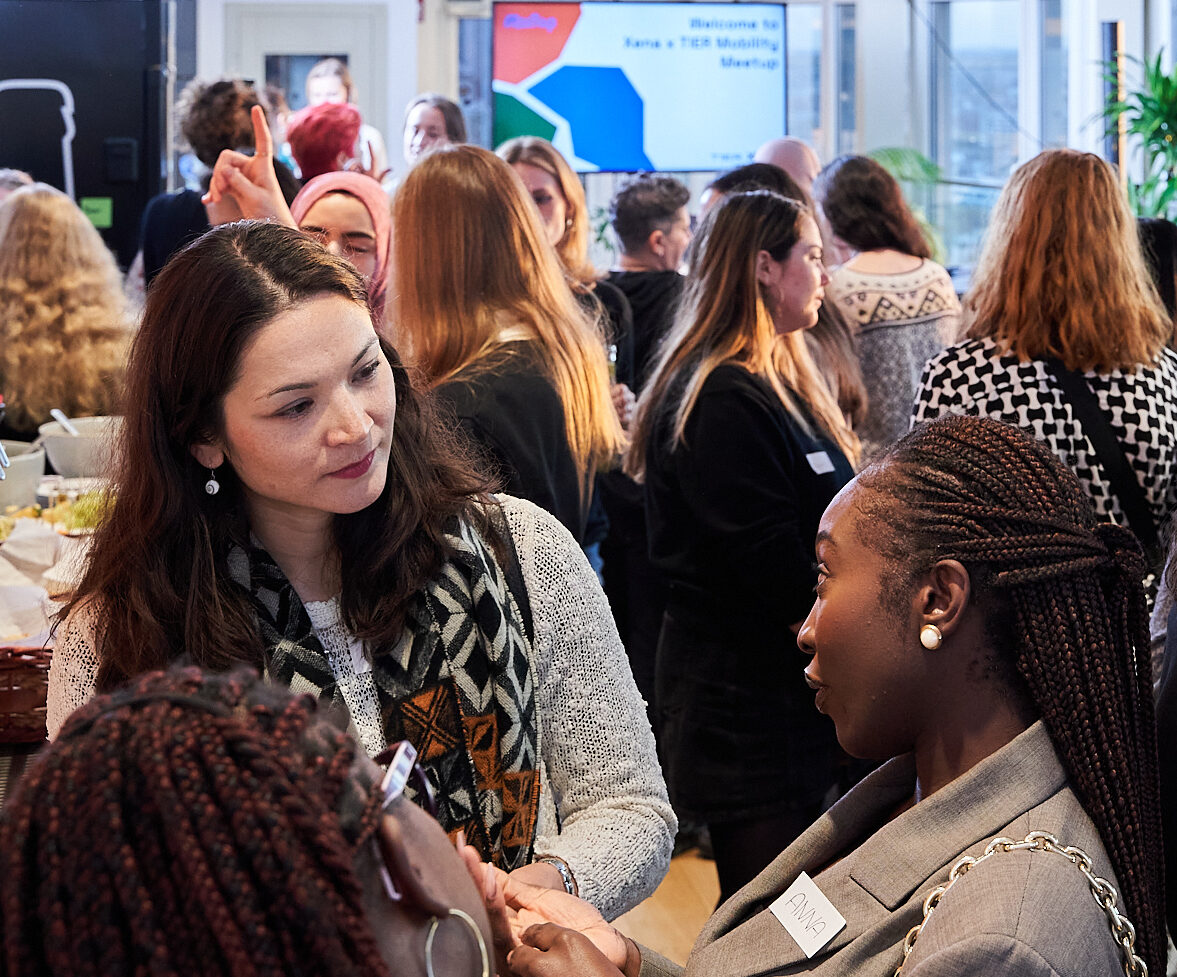5 min. read
The Art of Allyship
How To Support Underrepresented Groups in Tech?

Have you ever asked yourself:
What are things I can do as an ally in tech?
How can I support women on my tech team?
How to be an inclusive manager?
How can I become an ally?
Well, you’re in the right place. Whether you found this blog or it has found you, do not worry – we got you covered! The truth is, these are (and more) all very valid questions and good to know that there is no one-way road to allyship.
Therefore, it is important to avoid the trap of perfectionism –we shouldn’t hold ourselves back. We need to take action to create more inclusive workplaces and cultures where everyone can do their best work and thrive.
Let’s get started with a definition:
Allyship is the practice of empathising with the experiences of systemically disadvantaged groups, looking out for biases, and actively using your voice and power to advance equity.
Keep in Mind: Being An Ally Is A Journey
On the journey to be a better ally, it is important to take a moment to understand one’s privilege. Privilege comes in many shapes and forms but simply reflecting on the benefits or obstacles you face at work is a great starting point. We don’t all have the same starting point but we can all make sure to level the game as we go.
“Do the best you can until you know better. Then when you know better, do better.” –Maya Angelou, American civil rights activist.
We have 4 actions ahead that can help support you along the way to allyship but beware, these are not “one-timers” to tick off. Allyship is an iterative process.
The best allies are those willing to put in the effort, make mistakes and keep trying.

1. Learn & Unlearn
Educate yourself. It’s impossible to know everything or anticipate the needs and expectations of everyone in our teams and workplaces. Get curious and make it a habit to immerse yourself in perspectives other than your own. See below some resources to kick off your journey:
– Think Again: The Power of Knowing What You Don’t Know by Adam Grant
– How to be an Inclusive Leader by Jennifer Brown
– Power, for All By Julie Battilana and Tiziana Casciaro
“Even as a bisexual person and part of a minority, I’ve realized how important it is to keep learning and unlearning to support all underrepresented groups truly. Although I have faced my share of discrimination, as a white man (even when queer), I stand at the peak of privilege and would never be able to live the different experiences of women, trans people, non-binary individuals, people of colour, or those who are neurodivergent. That’s why I need to constantly educate myself, listen, and be open to learning from the diverse people around me.”
– Víctor Moreno Alhambra, Head of Engineering at HER App
2. Speak Up
Start with a single act. When we stand by and do not say something when we see racism, sexism, micro/macro-aggressions or any non-inclusive behaviour – we silently send the message that we’re okay with it. Awareness is the first step then it is essential to speak up and push back to disrupt the non-inclusive status quo. There is no one right approach to taking action, but here are a few considerations for you:
What’s the right moment to say something? Be mindful to create a safe space for the conversation. There is a time and a place for each circumstance, and an ‘in-the-moment’ approach may not necessarily be the solution.
Therefore, consider whether that particular conversation would be best had at the exact moment (possibly in front of other people) or one-on-one.
Confronting isn’t the only option. There are other types of actions you can do something to advocate, amplify, and support your colleagues from underrepresented groups, such as:
– Speak with the person after the incident of bias or discrimination. You can also get their input on what would be their preference on how you support them.
–Amplify their work e.g., “XX had some really interesting ideas in yesterday’s meeting.”
In some cases, it might be that the speaker may not have intended the comment to be offensive, but we must hold each other accountable. A great piece with examples is ‘Recognizing and Responding to Microaggressions at Work‘ by Ella F. Washington.
3. Broadcast Your Support
Commit to DEI and invite others to join you. The key here is to seize the moment and commit. Creating an inclusive work culture that values diversity and provides a supportive environment for all employees is the path to DEI in tech. It won’t happen overnight and it won’t happen “magically”. We need commitment.
Promote inclusive hiring practices, diverse mentorship programs, and equal growth opportunities.
For example, take a look at HelloFresh’s Women in Technology & Internship Program which is holding the door wide open, providing pathways into tech for women from non-traditional educational backgrounds and career changers.
If you don’t know where to start, it can be as simple as double-checking that your job descriptions are inclusive. We have some more examples of companies and their initiatives that champion women in tech.

4. Spread the Word & Open Doors
Keep it simple: empower others. During our Xena Tech Summit 2024, Anna Ott, VP of People at HV Capital shared 10 hacks to make recruitment more inclusive. Her call to action was clear: for everyone to ‘check their privilege’ and transform their power into a force that empowers others, effectively opening doors from the inside out. There are 2 main ways you can empower others:
Sponsorship: if you are someone who is invited to decision-making meetings, make sure to spend some of your hard-earned social capital advocating on someone’s behalf. Prioritise inclusivity and tie it to performance. However, to be an effective sponsor, you need to know coworkers from marginalised groups so you can speak about them when they’re not around. Get to know the quality and impact of their work so you can describe their potential.
Mentorship: make the time to share your knowledge. You can help open career doors and other opportunities that otherwise might be sealed off.
Bonus: Get the management team on the DEI side. Encouraging leaders to also be on board is a game-changer. We’ve developed a 4 step process on how to embrace DEI conversations with tech stakeholders to drive change together.
Remember: it takes time
You are about to embark on a journey, make sure to remember that it’ll be an ongoing learning process.
When mistakes are made, apologise for the impact and harm caused. And pledge to do better.










